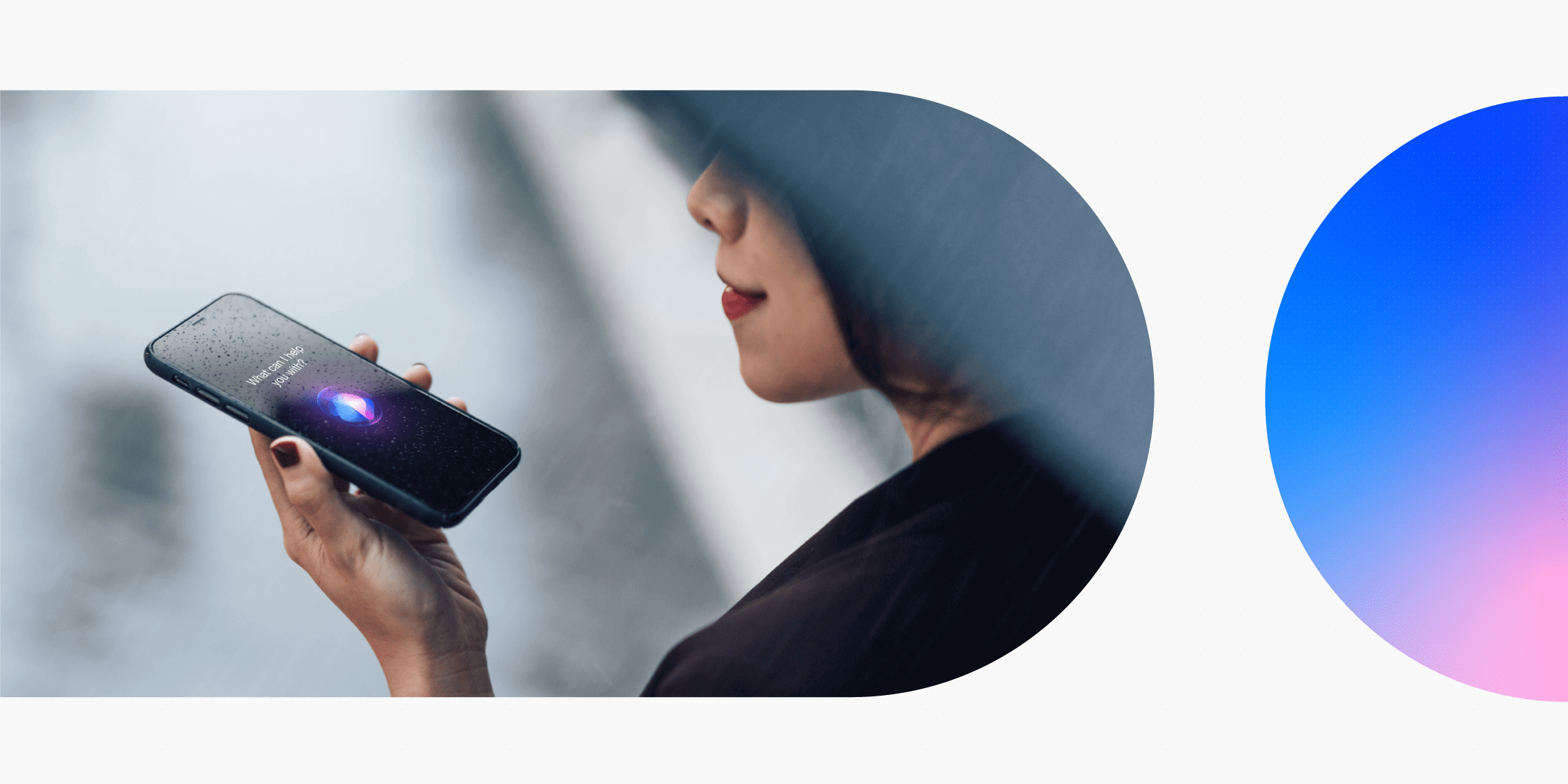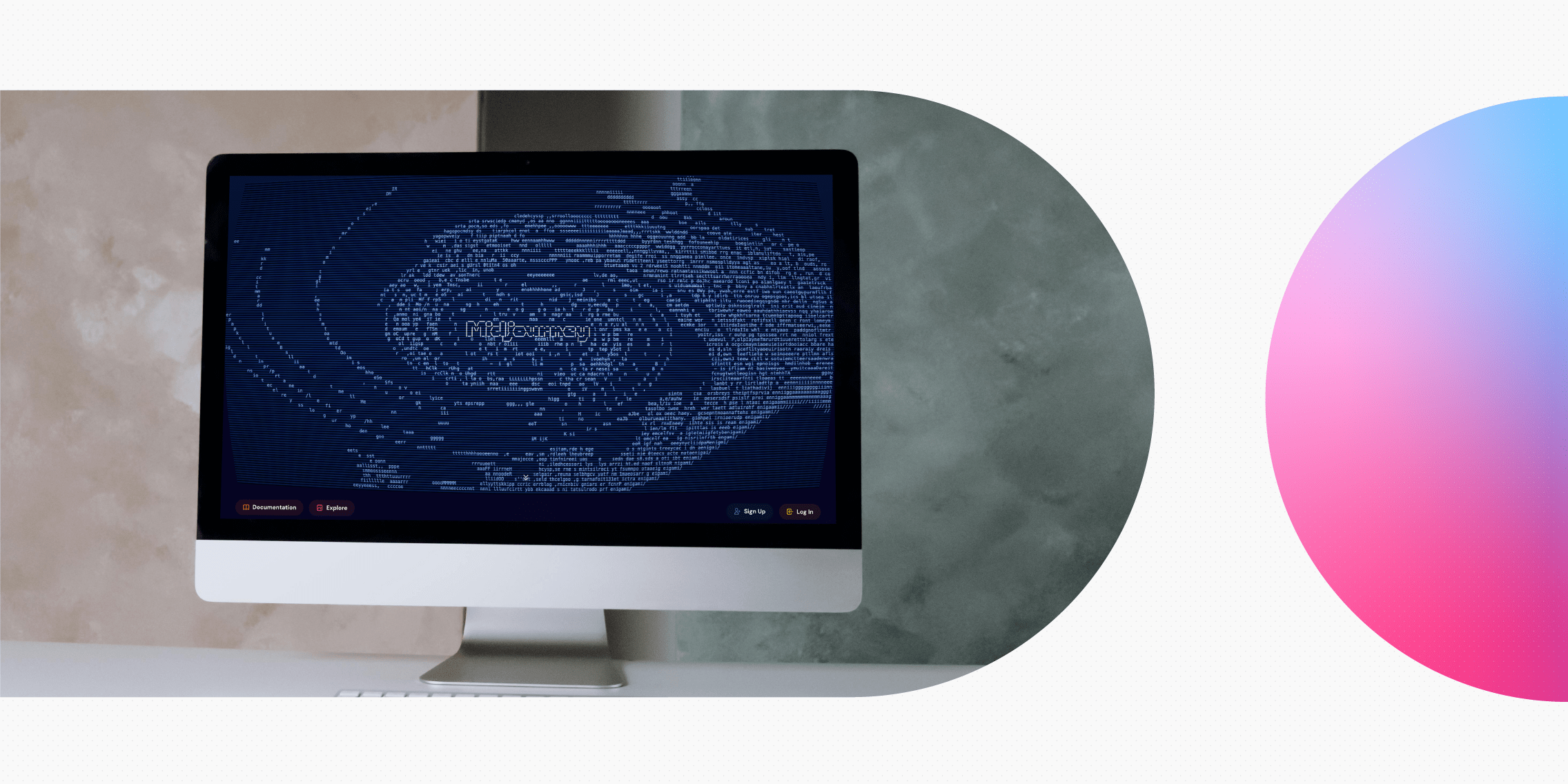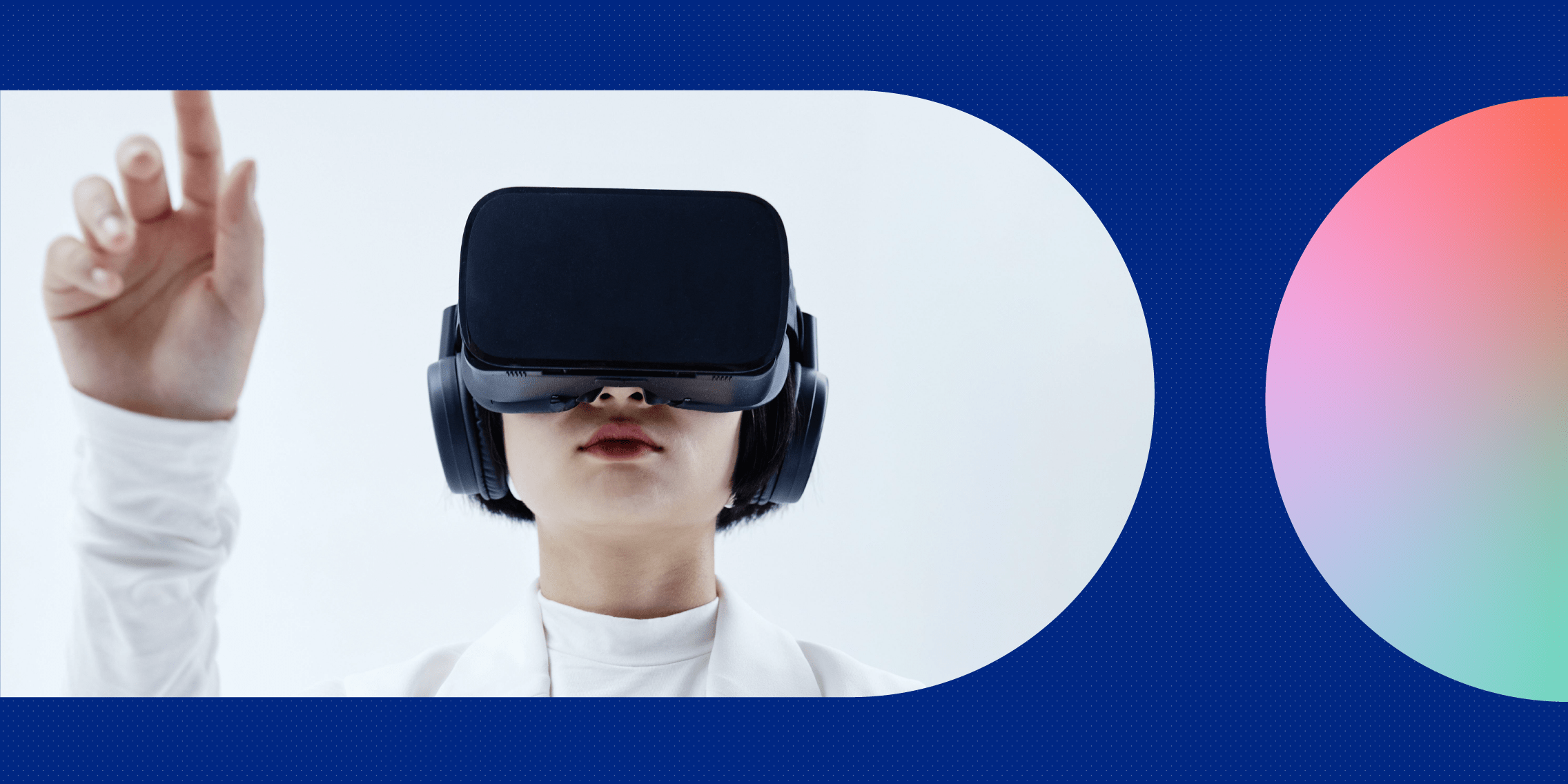(This article was originally published in November 2022. It has been updated with fresh insights for 2024.)
Artificial intelligence is on the rise, with AI technologies and tools now widely in use across many business functions.
As it stands, over 80% of businesses have adopted AI in some form. And, by 2025, AI and machine learning will generate an estimated $4 trillion in business value. By 2035, it’s thought that AI will boost corporate profitability by 38% across 16 industries.
That’s great for business—but what about the people employed in those sectors? More specifically, will AI replace UX designers?
In this post, we weigh up the future of UX in the age of AI, exploring:
First things first: What exactly is AI?
What is AI?
AI (artificial intelligence) refers to computer systems and machines which are ‘trained’ to mimic the intelligence of humans. In simple terms, AI works by training computers to process large volumes of data, recognise patterns within the data, and carry out certain actions accordingly.
AI is used to automate tasks that have traditionally been carried out by people. Consider the increasing use of chatbots to understand and respond to customer queries—that’s an everyday example of AI in action.
Artificial intelligence is also used to enhance existing products and technologies. Remember how Apple added Siri, the AI-powered digital assistant, to their product portfolio in 2011? Netflix is another prime example, using recommendation algorithms to suggest TV shows you might like based on your previous viewing data.
That’s AI in a nutshell. Now for the question at hand: Will AI replace UX designers?
Will AI replace UX designers?
The World Economic Forum predicts that, while AI will have an impact on current jobs as they are, it will also create 92 million new digital jobs by 2030. Also, as per their Future of Jobs, 2023 report, World Economic Forum forecast that businesses will prioritise design and UX skills as top tech skills (besides AI and big data) between 2023 and 2027.
It’s also important to note that automation will vary greatly by sector. While industries like finance, transport, and logistics are likely to be heavily impacted by AI, jobs that rely on social skills and the so-called ‘human touch’ won’t be so easily displaced.
So what about UX designers?
The general consensus is that AI will not remove the need for UX design, nor will it replace human UX designers.
UX design is arguably one of the most human-centric jobs out there. It requires empathy to relate to your target users and understand the problems they need you to solve. It calls for an in-depth understanding of how the human mind works and why people behave the way they do when using certain products and services. And, of course, it relies heavily on collaboration between multiple human stakeholders.
It’s hard to imagine a world where all of that ‘humanness’ could be replaced by artificial intelligence. Ultimately, designing experiences for humans requires a human touch. Right now, that’s something that only humans can offer.
That’s not to say that AI has no place in the UX design world. Far from it, in fact. AI is having a major impact on the UX design industry, and it’s transforming how UX designers work on a day-to-day basis.
With that in mind, let’s consider how AI is shaping the UX industry today and how it can assist UX designers in the creation of outstanding user experiences.
How is AI transforming the UX industry?
The impact of AI on the UX industry is huge, bringing with it a whole host of opportunities and challenges. Here’s what the advent of AI means for UX professionals right now:
- New tools and technologies: The traditional UX tool stack is undergoing some serious updates as new AI-powered tools and features are released at speed. UX designers must learn to embrace these new tools while understanding their limitations, and remain adaptable as tools and technologies continuously evolve. We’ll explore some of the most promising AI tools for UX towards the end of this post.
- Many aspects of the UX designer’s job are changing: Thanks to AI, UX designers can now automate routine tasks, streamline their workflows, and tap into large volumes of data and analytics. This means that the nature of the job is slowly but surely shifting. As AI takes care of more low-stakes tasks, UX designers will find themselves more focused on problem-solving, strategy, research, and vision.
- UX designers will need to develop new and different skills: Directly related to the two previous points regarding new tools and technologies and the evolving nature of the profession, UX designers will need to acquire and leverage different skills. Research skills are now more important than ever, as are strategic thinking, problem-solving, empathy, and intuition.
- The bar is higher than ever in terms of great UX: AI is taking things up a notch in terms of what’s possible, empowering designers to create hyper-personalised products and experiences. As such, the bar has never been higher. UX designers will need to find ways to differentiate their products, with emotional design playing an increasingly crucial role.
- UX designers will face unprecedented challenges and ethical dilemmas: AI poses many challenges when it comes to consumer trust, transparency, bias, manipulative design practices, and unintended outcomes. As AI becomes increasingly integrated into the UX process, designers will have to be diligent in ensuring that their design practices are ethical, inclusive, and safe for the user. This will be a major challenge as designers find themselves navigating uncharted territory.
As you can see, AI is largely an ally in the UX design process. Now let’s explore some more concrete uses of AI in UX.
How UX designers can leverage AI to create even better user experiences
AI isn’t a threat to the UX designer’s livelihood. Rather, it’s a powerful tool that UX designers can leverage to create top-notch user experiences.
AI can help with UX by:
- Making it easier to gather and analyse large volumes of user data
- Enabling more precise personalisation
- Providing users with improved customer service
- Automating certain aspects of the design process
- Helping to address the web accessibility gap
Let’s explore each of these opportunities in more detail.
AI makes it easier to gather and analyse large volumes of user data
Data and analytics play a pivotal role in the UX design process. Whether collecting data as part of your initial user research, running A/B tests to see which version of a design performs best, or analysing behavioural data to see how your product performs in usability testing—the more data you can gather and analyse, the deeper your insights will be.
AI makes it easier to handle data at scale, ultimately giving UX designers a better understanding of what users want and need.
AI enables more precise personalisation
Personalisation in UX is about providing the end user with content that’s closely tailored to their needs and interests. It uses behavioural data and machine learning (a subset of AI) to adapt the product interface depending on who’s accessing it. This ensures that each individual user is presented with the most relevant information for them. As such, personalisation is a powerful tool for improving the user experience and resonating with your target users.
AI allows you to provide better customer support
In order to deliver a positive user experience, many products and services need to incorporate quick and effective customer support. For example, if you’re designing an ecommerce website or a banking app, you want your users to be able to resolve any issues promptly and efficiently. Chatbots are a great example of how AI can help you to design customer support into your product—and thus enhance the user experience.
AI-powered design tools boost efficiency
While there’s no immediate danger of AI replacing UX designers, it can help to automate some aspects of the design process. There are many AI-powered programs on the market; in fact, you may have unknowingly leveraged AI when using some of the most popular UX design tools.
There’s Adobe Sensei, an AI tool that integrates with Adobe software; platforms like Uizard, an AI-powered prototyping tool; and the likes of Khroma and Colormind which automate the task of creating colour palettes—to name just a few. UX designers will always need to rely on their own unique skills and creativity, but AI can lend a helping hand when it comes to some of the more routine tasks. We share more AI tools for UX in the next section.
AI can help to close the web accessibility gap
Accessibility is one of the fundamental principles of UX design. It’s about ensuring a product or service is accessible to as many people as possible, particularly focusing on users with disabilities. Unfortunately, less than 2% of all websites are meeting accessibility guidelines, resulting in what’s known as the web accessibility gap.
Writing for Forbes, Niv Penso explains how AI can be used to improve accessibility on a major scale:
“AI-powered solutions now make it possible for website owners to make their sites accessible without having to alter their source code. The automatic nature of the process presents a scalable solution to the web accessibility gap. Now, remediation processes can be done on a global scale, to millions of websites and with automatic, ongoing maintenance. More importantly, it can make a huge difference in the lives of millions of people with disabilities worldwide.”
What are the most promising AI tools and technologies for UX?
Many industry-standard UX design tools now come equipped with AI-powered features. The rise of AI has also introduced brand new tools and technologies that are already incredibly popular among UX professionals.
Here are some of the most promising AI tools for UX, broken down in terms of the UX process.
AI tools for user research
User research is typically time-consuming and resource-heavy. But now, thanks to AI, obtaining valuable user insights is a whole lot easier. Some of the most popular AI-powered tools for user research include:
- Miro Assist, a chat-like feature directly integrated into your Miro board. Miro Assist uses machine learning to understand and summarise the content on your board and generate visualisations.
- Dovetail, a user research and customer feedback analysis platform. With Dovetail’s AI features, you can streamline the task of analysing qualitative data.
- QoQo, a Figma plugin powered by OpenAI’s GPT (the same technology behind ChatGPT). Combined with Figma, QoQo can automate the process of creating user journey maps, generating affinity diagrams, and writing interview scripts.
For a full breakdown, and more tools, check out this guide: The top 5 AI-powered tools for user research (and how to use them).
AI tools for UX design
Whether you want to automate the task of creating wireframes, tap into advanced behaviour analytics, or bounce ideas off of a sophisticated language model, there’s an AI tool to help. Here are some of the most promising AI tools for UX currently on the market:
- Uizard, the go-to AI tool for rapidly generating wireframes, mock-ups, and prototypes.
- Attention Insight, a sophisticated platform that provides AI-powered heatmaps and analytics to help UX designers understand where users focus their attention on a webpage. This is great for additional testing and validation (not as a replacement for actual testing with real users).
- ChatGPT, the now-famous AI-powered chatbot that simulates human-like conversations. ChatGPT can help with many different aspects of the UX design process—from research and ideation to generating feature lists, step-by-step guides, checklists, and more.
That’s just a handful of AI tools making their way into the UX design process. You can watch some more in this video here, top AI tools for UX designers.
AI tools for content design
Content design is a burgeoning field within the design industry. And, just like every other aspect of the UX process, there’s a growing stack of AI-powered tools for content designers and UX writers. Among the most popular are:
- Phrasee, a powerful content design tool that uses generative AI to produce content and copy that resonates with your end users. You can also use it to run automated copy tests for continuous content optimisation.
- Acrolinx, an AI-powered content governance tool. Content designers are increasingly using Acrolinx to analyse and optimise their copy and to create content guidelines.
- Frontitude’s UX Writing Assistant, a Figma plugin that uses AI to generate product copy suggestions within your designs. As the name suggests, it should be used as an assistant—not as a replacement for human-approved content.
You’ll find more AI tools for content design in this guide.
The takeaway
It can be scary to read about the rapid rise of AI and the impact it’s set to have in the not-so-distant future. But hopefully, this post has helped to assuage some of your fears about how AI might affect the UX designer’s role. As it stands, it’s highly unlikely that AI will replace the need for UX designers. Ultimately, UX is far too reliant on the ‘human touch’; empathy will always be number one when it comes to designing user-friendly products. AI will play an increasing role in the UX design process, but we see it as an opportunity rather than a threat.
So, if you’re thinking about becoming a UX designer, don’t let AI deter you. Human designers are still very much in demand, and will continue to be for a long while yet.
Ready to join this exciting industry? Check out our guide on how to learn UX and get started in the field.


![Will AI (Artificial Intelligence) replace UX Designers? [2024 update] 1 will AI replace UX Designers](https://www.uxdesigninstitute.com/blog/wp-content/uploads/2024/02/204_UX_Will_AI_remove-need_for_UX_image-1-1.png)
![Will AI (Artificial Intelligence) replace UX Designers? [2024 update] 2 Screenshot of top skills from World Economic forum report](https://www.uxdesigninstitute.com/blog/wp-content/uploads/2024/02/Screenshot-2024-02-20-at-11.39.47.png)


